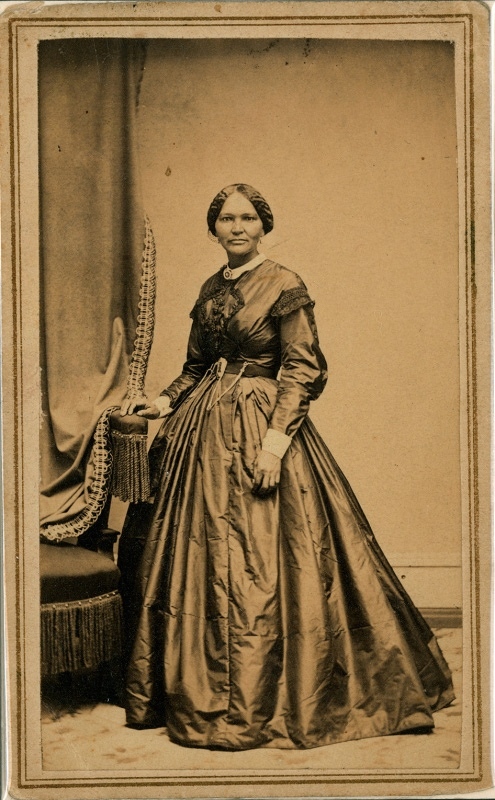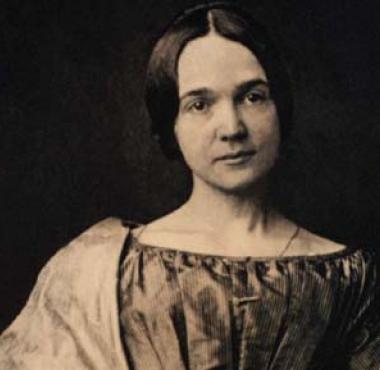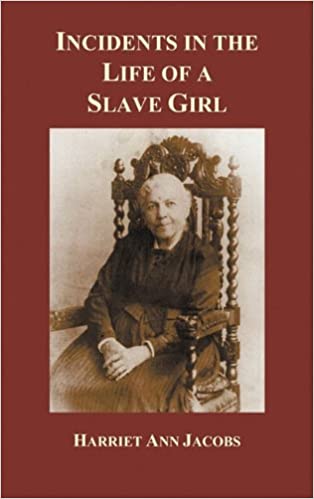
The Loathsome Den: Sexual Assault on the Plantation, #MeToo of the 19th century
by Curtis Harris
In 1868, Elizabeth Keckly published Behind the Scenes: Or, Thirty Years a Slave and Four Years in the White House. The memoir detailed the 50-year old Keckly’s three decades as a slave, how she secured freedom for herself and her son, and her friendship with the Lincolns during the Civil War. Also within the pages of her book was Keckly’s public revelation that she had been routinely raped by a white man when she was a young woman. Although revealing the abuse, Keckly chose to “spare the world his name.”
Privately coming forward as a survivor of any sexual or physical abuse is hard enough. To publicly name the abuser is often a fraught path. Legal prosecution of the offender is not certain; economic and/or physical retaliation a possibility; and public scrutiny, if not shame, a certainty. Nonetheless, victims then and now still come forward. Indeed, the last year has been dominated by the revelations of women (and some men) who have been sexually abused. Their whirlwind of resistance coalesced online via the #MeToo movement and Time named “Silence Breakers” as its Person of the Year. Over 150 years ago, a similar tempest arose as abolitionists tried to awaken the American conscience on slavery and sexual assault.

Elizabeth Keckly
The particulars of a plantation and a movie studio are certainly different. Nonetheless, predatory behavior, whether in a field of cotton or at an afterhours party, retains an eerie echo across the eras. Perpetrators, then and now, have used economic coercion and physical force to subdue victims; they demonstrate a brazen entitlement to the bodies of others; and rely upon threats of retaliation and shame to silence victims.
Also prevalent in both the modern era and the past, has been the knowledge of bad actors being met with a lack of acknowledgement from society. What we today term “open secrets” were described by white Southerner Mary Chesnut in 1861 as “the thing we cannot name.” Chesnut continued by noting the delusion needed to ignore sexual misconduct: “[E]very lady tells you who is the father of all the Mulatto children in everybody’s household, but those in her own, she seems to think drop from the clouds or pretends so to think.”

Mary Chestnut
SURVIVORS
Abolitionists worked tirelessly in the mid-19th century to bring public attention to the plight of the sexually assaulted on plantations. Prominent in the abolitionist campaign were the stories of people who had experienced slavery and were thus harmed by sexual assault, whether directly or indirectly. Frederick Douglass, born in Maryland sometime around 1818, exemplifies how the direct harm of sexual abuse quickly spreads indirect detriments. Douglass recalled in his first autobiography the uncertainty surrounding the identity of his biological father:
“My father was a white man. He was admitted to be such by all I ever heard speak of my parentage. The opinion was also whispered that my master was my father; but of the correctness of this opinion, I know nothing; the means of knowing was withheld from me.”
The “whispers” of Douglass’s white father echo the “open secrets” of our own time. More importantly, though, is the power dynamic that his mother faced. Much like believing an underage person could consent to sexual relations with an adult, the notion that an enslaved person could consent to any sexual relation with a master is perilously fraught. The plantation system dismantled any notion of consent by the enslaved. Indeed, if there is a central tenet of slavery it is depriving agency from one human and placing it in the craven hands of another. The enslaved who resisted that central tenet risked harsh punishment.
To that point, there is the saga of Celia. She was a black teenager in Missouri who killed her master, Robert Newsom, in self-defense. Newsom purchased 14-year old Celia in 1850 and routinely raped Celia over the next five years. Despite the attacks, which resulted in Celia bearing one of Newsom’s children, the teenager had no legal defense or recourse toward the man. Taking matters into her own hands, Celia killed Newsom in 1855. However, that defense of her body proved illegal. The State of Missouri executed Celia for the crime. In so doing, they sent a clear and powerful message: no matter how brutal the sexual or physical abuse, an enslaved woman had no legal right to defy her master.
Solomon Northup witnessed similar absurdity during his twelve years as a slave. The plight of Patsey is a central part of his memoir. Edwin Epps, master of Northup and Patsey in Louisiana, routinely assaulted Patsey sexually, physically, and emotionally. Master Epps’s abuse of Patsey brewed an intense jealousy on the part of Mistress Epps, who was effectively powerless to stop her husband’s behavior. She futilely begged him to end the rapes. Reaching that dead end, Mistress Epps herself began to physically abuse Patsey as the only retaliatory recourse against her husband. As Northup summarized, “The enslaved victim of lust and hate, Patsey had no comfort” as she endured the status of abused pawn in the Epps’s marriage.[1]
(It should be noted here that our modern conception of “mistress” is not suited for the plantation. In slavery times, “the mistress” was the wife of the plantation master. A black woman being sexually assaulted by the master was therefore no “mistress.”[2])
Harriet Jacobs in her memoir, Incidents in the Life of a Slave Girl, also recalled the uncaring attitude of the white mistress toward raped black women. Jacobs’s mistress, suspicious of her husband’s behavior, ordered Jacobs to confess the rapacious actions of the master. Initially, Jacobs and the mistress seemed to share common pain in the ordeal. However, Jacobs realized her pain and that of the mistress were entirely different:
“….I was soon convinced that her emotions arose from anger and wounded pride. She felt that her marriage vows were desecrated, her dignity insulted; but she had no compassion for the poor victim of her husband’s perfidy. She pitied herself as a martyr; but she was incapable of feeling for the condition of shame and misery in which her unfortunate, helpless slave was placed.”[3]
Jacobs would lament that it was “criminal” for “a favorite slave…. to wish to be virtuous.”[4] Harkening back to Celia’s plight, Jacobs reminds us that for an enslaved woman to control herself and refuse any sexual advance was essentially illegal. Jacobs’s anecdotal observation has also caught the attention of historians like Walter Johnson, who have researched slave auctions. Johnson identified that “favorite” or “fancy” female slaves sought for sexual exploitation could make handsome profits for slave dealers. A trafficker named Phillip Thomas in Richmond, Virginia, described one such purchase: “13 years old Girl, Bright Color, nearly a fancy for $1135.”[5]

Cover of Harriet Jacobs’ memoir “Incidents in the Life of a Slave Girl,” first published in 1861
Elizabeth Keckly experienced this “fancy” perversion as well. Living in North Carolina during the 1830s, Keckly described “savage efforts to subdue my pride” by a white man:
“I was regarded as fair-looking for one of my race, and for four years a white man – I spare the world his name – had base designs upon me. I do not care to dwell upon this subject, for it is one that is fraught with pain. Suffice it to say, that he persecuted me for four years, and I – I – became a mother. The child of which he was the father was the only child that I ever brought into the world.”
Keckly indicted society for its complicity allowing the rampant violation of black women’s rights: “If my poor boy ever suffered any humiliating pangs on account of birth…. he must blame the edicts of that society which deemed it no crime to undermine the virtue of girls in my then position.”[6]
THE DEN’S EDIFICE
Having witnessed these horrors firsthand, Keckly was not wrong in her indictment. As her son was the product of sexual assault, so was she. Keckly’s mother, Agnes, was an enslaved woman assaulted by Armistead Burwell, her master. The sexual exploitation was generational and resulted time after time in white men owning their children in bondage just as Chesnut described.
The infrastructure supporting unpunished and pervasive sexual assault on plantations started in America’s colonial era. Beginning in the 17th century, Virginia codified sexual relations between black men and white women as criminal, even when the two parties consented and desired marriage. In 1691, Virginia ordered that any white woman who bore a mixed-race child would be fined fifteen pounds. If the fine was not paid, imprisonment or indentured servitude up to five years would be imposed. Furthermore, any white person who married a nonwhite person would be banished forever from Virginia within three months.[7]
While that particular crackdown on intermarriage was occurring, Virginia’s laws simultaneously incentivized white men to abuse black women. Since a child’s freedom was tied to status of the mother, if an enslaved mother gave birth, the child would also be enslaved – regardless of the father’s status. Thus, sexual abuse by the master might be followed nine months later by more chattel property added to the estate. Though Virginia’s assembly could have legislated some protections for enslaved black women, historian Edmund Morgan details they did no such thing, thus lending sanction to a master’s predatory whims:
“The laws said nothing about black women who had illegitimate children by white fathers, perhaps because few black women were free and the children of slave women were neither legitimate nor illegitimate, no matter who the father was. Given the power of white masters over women slaves, it is altogether likely that many black women bore mulatto children. But since the mother was a slave, the child, in spite of intermediate color, would be a slave. Such mulattoes would therefore not constitute an intermediate class. They must be seen as black. And the [Virginia] assembly took pains in all its laws to identify them with blacks and to deny them any benefit from a free paternity.”[8]
Thus, this basic formulation of the slave code in the United States allowed for, even encouraged, the abuse of black women by white men, while making black men and white women engaging in consensual relationships both taboo and a criminal act.
Thus for nearly two centuries, the cries for help and justice by the enslaved were not acted upon sufficiently. When emancipation finally arrived, there was some reason for hope with the legislative victories of Reconstruction. However, that era was later sundered by the imposition of Jim Crow laws, which resulted in a system nearly as unjust as what was there before. Thus, black women over the next century continued facing brazen assault at the hands of white men who were not held accountable by the legal system and existing power structures.
In 1944, NAACP secretary Rosa Parks, a decade before she instigated the Montgomery Bus Boycott, investigated the gang rape of Recy Taylor by six white men. Despite acquiring copious evidence of the perpetrators’ guilt, a grand jury in Alabama refused to indict the men. Recy Taylor is still alive at age 97 and lives with the knowledge that the men who assaulted her were never tried, much less convicted, for the crime.
Despite the injustice for Taylor, another Southern black woman, Betty Jean Owens, was vindicated in 1959 when four white men in Florida were convicted of raping her. The conviction was startling enough, but the four men were also sentenced to life in prison. According to historian Danielle McGuire, this proved a watershed moment in the civil rights movement. By 1965 Jim Crow faced its overdue legal demise.
Perhaps it’s no coincidence then that the stories we’ve observed from the slavery era publicly came to light during the 1850s and 1860s. This was a time when the “peculiar institution” of slavery was criticized as never before and finally demolished via presidential proclamation and constitutional amendment that finally gave legal sanction to the resistance the enslaved had always mounted.
Serving as guiding lights and clarions, the silence-breakers of the 19th century awakened the rest of society from an unjustified comfort gained by accepting the idea of “open secrets” and “things we cannot name.” Lydia Maria Child, friend of Harriet Jacobs, testified to this point in 1861. In her plea, Child swept aside the false comforts of ignoring abuse:
“I am well aware that many will accuse me of indecorum for presenting these pages to the public…. I willingly take the responsibility of presenting them with the veil withdrawn. I do this for the sake of my sisters in bondage, who are suffering wrongs so foul, that our ears are too delicate to listen to them…. I do it with the hope that every man who reads this narrative will swear solemnly before God that, so far as he has power to prevent it, no fugitive from Slavery shall ever be sent back to suffer in that loathsome den of corruption and cruelty.”[9]
That loathsome den yet remains. Over the last year, men accused of inappropriate behavior ranging from lewd comments to unwanted advances to groping and to rape include Louis C. K., John Conyers, Al Franken, Mark Halperin, Matt Lauer, Roy Moore, Bill O’Reilly, Charlie Rose, Bryan Singer, Kevin Spacey, Donald Trump, and Harvey Weinstein.
Delivering justice for enslaved victims of sexual assault was partial at best. The survivors of assault, then and now, deserve more than a mere modicum or nominal display of justice. Rejecting silence and embracing truth ensures the perpetrators receive the cultural, political, and judicial reprimands that they so well deserve. Otherwise, we re-send a miserable signal that a quick false comfort, which abuses and silences far too many, is somehow preferable to a hard-earned culture that protects and hears all.
Curtis Harris is a Museum Program Associate at President Lincoln’s Cottage, and a PhD History student at American University.
SOURCES and FURTHER READING
Edward Baptist. The Half Has Never Been Told: Slavery and the Making of American Capitalism.
Daina Ramey Berry. The Price for Their Pound of Flesh: The Value of the Enslaved, from Womb to Grave, in the Building of a Nation.
Sharon Block. Rape & Sexual Power in Early America.
Catherine Clinton. The Plantation Mistress: Woman’s World in the Old South.
Harriet Ann Jacobs. Incidents in the Life of a Slave Girl.
Walter Johnson. Soul by Soul: Life Inside the Antebellum Slave Market.
Elizabeth Keckly. Behind the Scenes in the Lincoln White House: Memoirs of an African-American Seamstress.
Danielle McGuire. At the Dark End of the Street: Sexual Violence and the Civil Rights Movement.
Edmund S. Morgan. American Slavery, American Freedom: The Ordeal of Colonial Virginia.
Solomon Northup. Twelve Years a Slave.
Anthony S. Parent, Jr. Foul Means: The Formation of a Slave Society in Virginia, 1660 – 1740.
[1] Solomon Northup, Twelve Years A Slave, (New York: Atria Books, 2013), 155.
[2] For more reading on the peculiar world of the plantation mistress, see Catherine Clinton’s The Plantation Mistress: Woman’s World in the Old South, (New York: Pantheon Books, 1982). Chapter 11 is particularly relevant to the ideas and issues discussed in this article.
[3] Harriet Ann Jacobs, Incidents in the Life of a Slave Girl, (New York: Skyhorse Publishing, 2015), 32.
[4] Jacobs, 29.
[5] Phillip Thomas to William Finney, July 26, 1859, as quoted in Walter Johnson, Soul by Soul: Life Inside the Antebellum Slave Market, (Cambridge: Harvard University Press, 1999), 113.
[6] Elizabeth Keckly, Behind the Scenes in the Lincoln White House: Memoirs of an African-American Seamstress, (Mineola, NY: Dover Publications, 2006), 14.
[7] Anthony S. Parent, Jr., Foul Means: The Formation of a Slave Society in Virginia, 1660-1740, (Chapel Hill: University of North Carolina Press, 2003), 116-117.
[8] Edmund S. Morgan, American Slavery, American Freedom: The Ordeal of Colonial Virginia, (New York: W.W. Norton, 1975), 336.
[9] Lydia Maria Child in Jacobs, Incidents in the Life of a Slave Girl, x.
